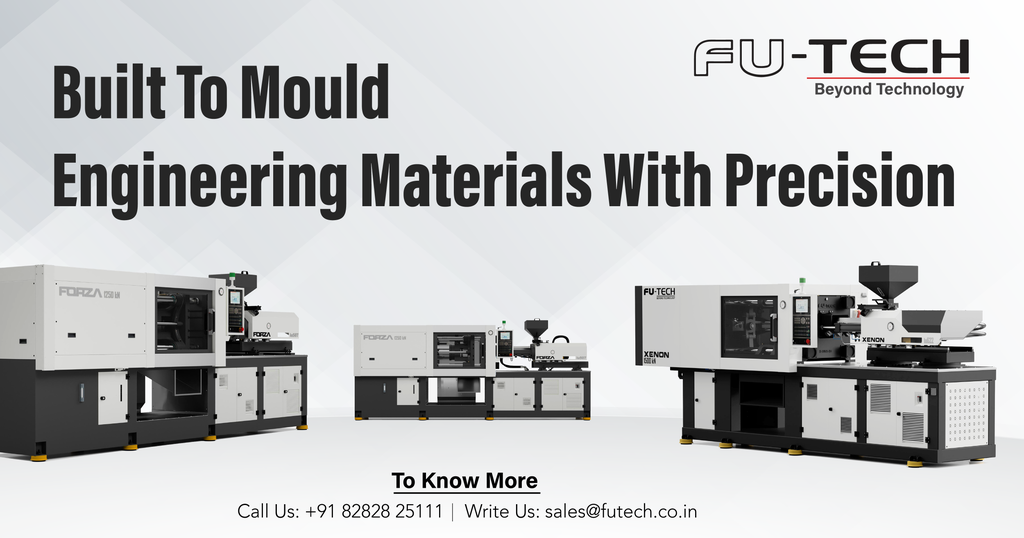Choosing right injection moulding machine for your production
Choosing the Right Injection Moulding Machine: Factors to ConsiderIn the world of manufacturing, · 4 min read
Choosing the Right Injection Moulding Machine: Factors to Consider
In the world of manufacturing, injection moulding stands out as a crucial process for creating a wide range of products, from everyday household items to complex automotive parts. The success of this process heavily relies on the selection of the right injection moulding machine. With a myriad of options available, choosing the perfect machine can be daunting. However, by focusing on several key factors, you can make an informed decision that aligns with your production goals and budget.

1.Type of Injection Moulding Machine
The first consideration is the type of plastic moulding machine. There are three primary types:
Hydraulic Machines: Known for their high clamping force and durability, hydraulic machines are ideal for manufacturing large, heavy-duty parts. They are generally more affordable than electric machines but can be less energy-efficient and require more maintenance.
Electric Machines: These machines offer high precision, energy efficiency, and faster cycle times. They are perfect for producing small, intricate parts with high repeatability. While the initial investment is higher, the operational cost savings and precision can justify the expense over time.
Hybrid Machines: Combining the best features of hydraulic and electric machines, hybrids offer a balanced solution with moderate energy efficiency, precision, and clamping force. They can be a versatile choice for manufacturers looking to produce a variety of parts.
2.Clamping Force
Clamping force is a critical factor that determines the size and type of parts you can produce. It is the force used to keep the mould closed during the injection process. Choosing a machine with the right clamping force is essential:
Too low: The mould might not stay closed, leading to defective parts and wasted material.
Too high: Unnecessarily high clamping force can lead to excessive wear and energy consumption.
To determine the appropriate clamping force, consider the size and complexity of the parts you intend to manufacture. A general rule of thumb is to multiply the projected area of the part by a factor that accounts for the material being used, typically ranging from 2 to 5 tons per square inch.
3.Shot Size
Shot size refers to the maximum amount of plastic the machine can inject in one cycle. It’s crucial to select a machine with a shot size that matches your production needs. A machine with an insufficient shot size won't be able to produce your parts, while a machine with an excessively large shot size may lead to inefficiencies and higher costs. Ideally, the shot size should be between 20% to 80% of the machine's capacity to ensure consistent quality and efficient operation.
4.Cycle Time
Cycle time, the total time required to produce one part, directly impacts your production efficiency and costs. Machines with faster cycle times can significantly increase your output. Electric machines typically offer faster cycle times compared to hydraulic ones due to their precise control over movement and speed. When considering cycle time, also account for the cooling time required by the material you are using, as it can be a significant portion of the overall cycle.
5.Energy Efficiency
Energy consumption is a major operational cost in injection moulding. Electric and hybrid machines are generally more energy-efficient than hydraulic ones. When evaluating machines, consider their energy consumption during both idle and operational states. Investing in an energy-efficient machine can lead to substantial savings over the machine’s lifespan.
6.Maintenance and Support
The availability of technical support and ease of maintenance are crucial for minimizing downtime and extending the life of your machine. Consider manufacturers with a good reputation for after-sales service and readily available spare parts. Some advanced machines come with diagnostic tools and IoT capabilities that allow for predictive maintenance, helping to avoid unexpected breakdowns.
7.Cost
While the initial cost of the machine is an important factor, it should not be the sole deciding criterion. Consider the total cost of ownership, which includes initial investment, operational costs, maintenance, and potential downtime. Sometimes, a higher upfront cost for a more efficient machine can lead to lower overall costs and higher profitability in the long run.
8.Flexibility and Customization
Depending on your production needs, you might require a machine that can be easily customized or adapted for different products. Machines that offer modular components or are compatible with a wide range of moulds can provide greater flexibility and reduce the need for multiple machines.
Conclusion
Choosing the right injection moulding machine is a complex decision that involves balancing multiple factors to meet your production goals effectively. By considering the type of machine, clamping force, shot size, cycle time, energy efficiency, maintenance and support, cost, and flexibility, you can make an informed choice that ensures efficient and high-quality production. Investing time in evaluating these factors will pay off in the long run with optimized performance and cost savings.
No comments yet. Login to start a new discussion Start a new discussion